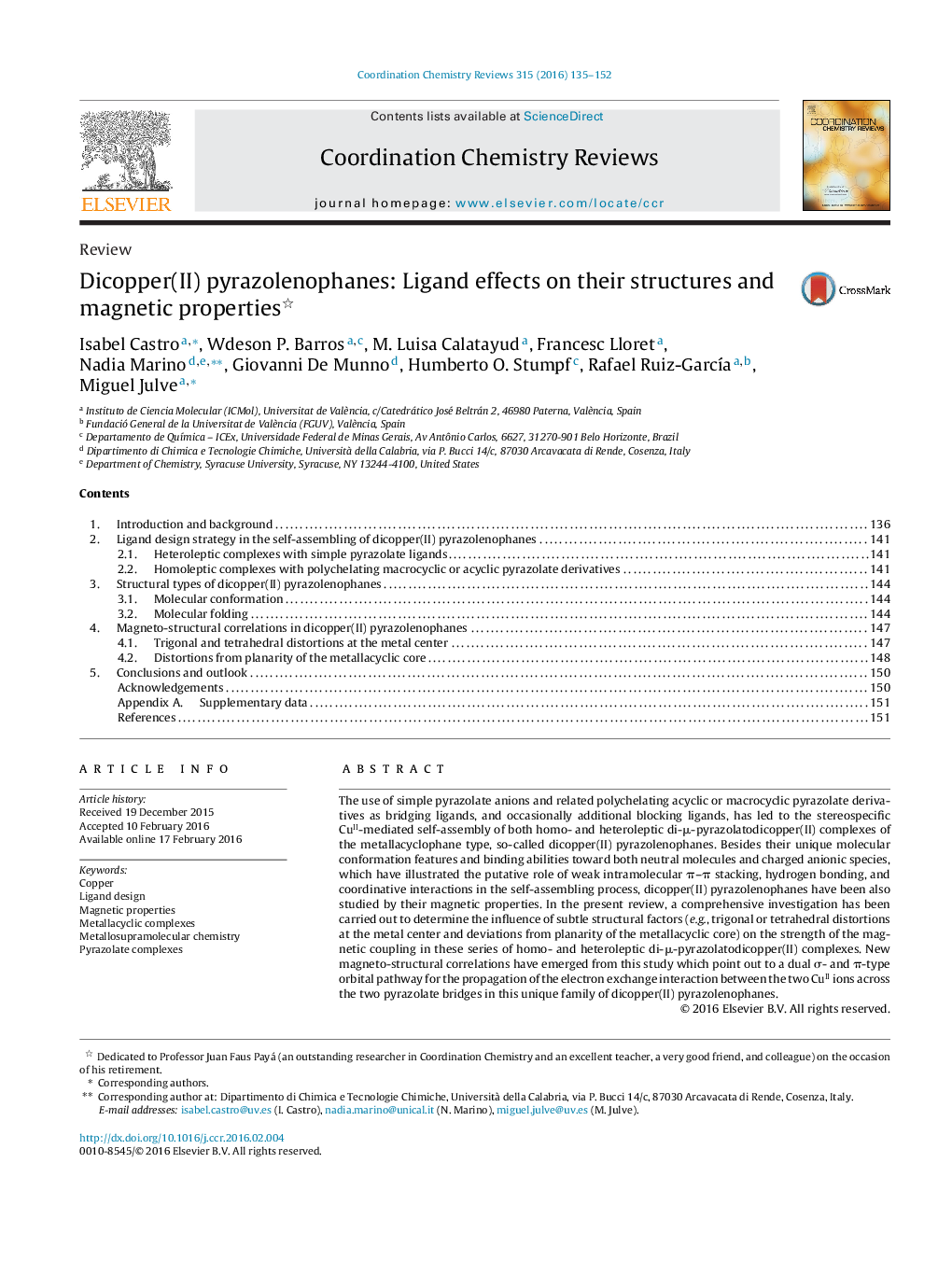| Article ID | Journal | Published Year | Pages | File Type |
|---|---|---|---|---|
| 1299498 | Coordination Chemistry Reviews | 2016 | 18 Pages |
•Dicopper(II) pyrazolenophanes as ground tests of through-ligand magnetic coupling.•Ligand design for homo- and heteroleptic dicopper(II) pyrazolenophanes.•Ligand effects on the conformation and folding of dicopper(II) pyrazolenophanes.•New magneto-structural correlations in dicopper(II) pyrazolenophanes.•Dual σ- and π-type orbital pathways in dicopper(II) pyrazolenophanes.
The use of simple pyrazolate anions and related polychelating acyclic or macrocyclic pyrazolate derivatives as bridging ligands, and occasionally additional blocking ligands, has led to the stereospecific CuII-mediated self-assembly of both homo- and heteroleptic di-μ-pyrazolatodicopper(II) complexes of the metallacyclophane type, so-called dicopper(II) pyrazolenophanes. Besides their unique molecular conformation features and binding abilities toward both neutral molecules and charged anionic species, which have illustrated the putative role of weak intramolecular π–π stacking, hydrogen bonding, and coordinative interactions in the self-assembling process, dicopper(II) pyrazolenophanes have been also studied by their magnetic properties. In the present review, a comprehensive investigation has been carried out to determine the influence of subtle structural factors (e.g., trigonal or tetrahedral distortions at the metal center and deviations from planarity of the metallacyclic core) on the strength of the magnetic coupling in these series of homo- and heteroleptic di-μ-pyrazolatodicopper(II) complexes. New magneto-structural correlations have emerged from this study which point out to a dual σ- and π-type orbital pathway for the propagation of the electron exchange interaction between the two CuII ions across the two pyrazolate bridges in this unique family of dicopper(II) pyrazolenophanes.
Graphical abstractFigure optionsDownload full-size imageDownload high-quality image (106 K)Download as PowerPoint slide
